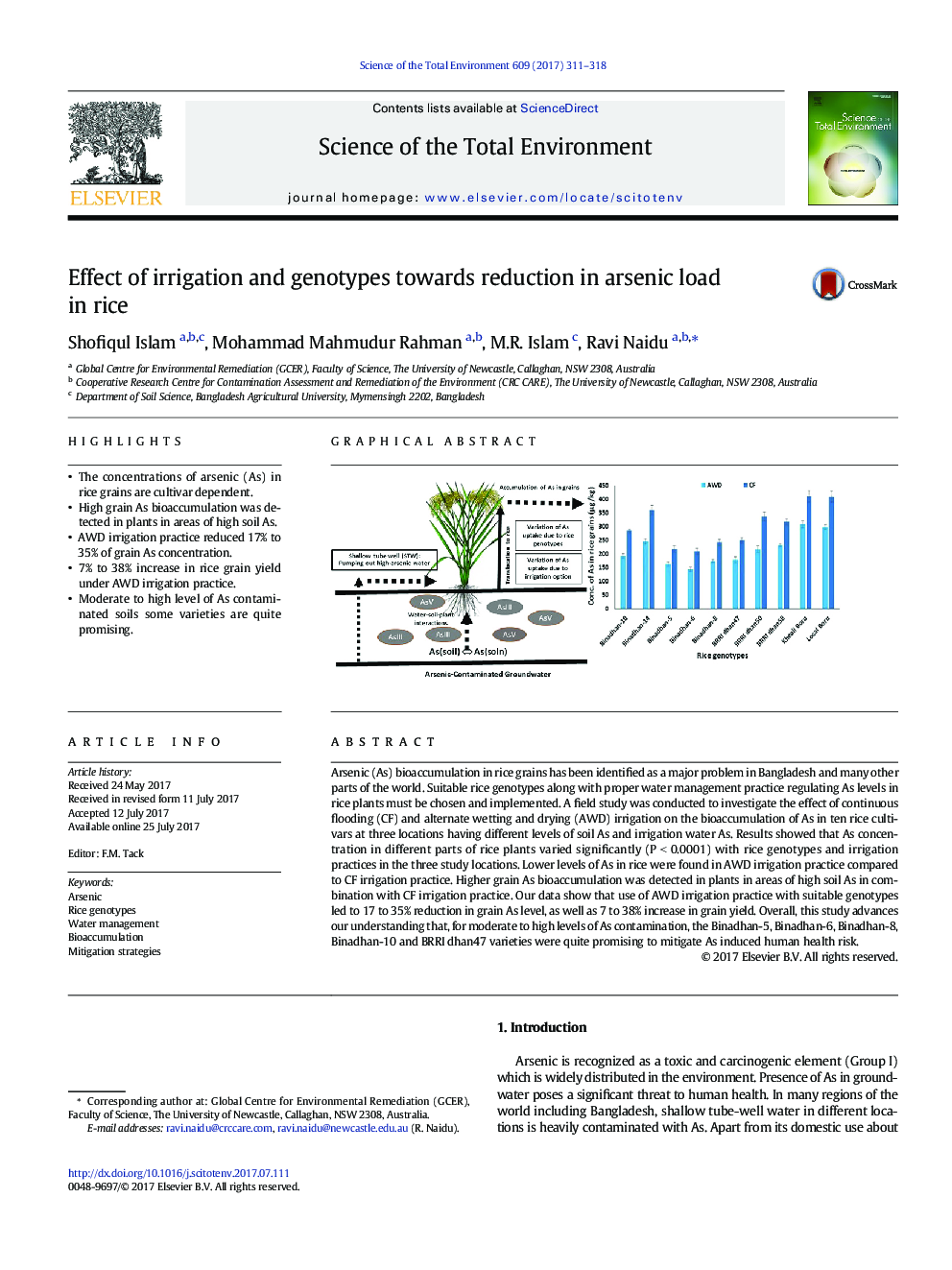| Article ID | Journal | Published Year | Pages | File Type |
|---|---|---|---|---|
| 5750757 | Science of The Total Environment | 2017 | 8 Pages |
â¢The concentrations of arsenic (As) in rice grains are cultivar dependent.â¢High grain As bioaccumulation was detected in plants in areas of high soil As.â¢AWD irrigation practice reduced 17% to 35% of grain As concentration.â¢7% to 38% increase in rice grain yield under AWD irrigation practice.â¢Moderate to high level of As contaminated soils some varieties are quite promising.
Arsenic (As) bioaccumulation in rice grains has been identified as a major problem in Bangladesh and many other parts of the world. Suitable rice genotypes along with proper water management practice regulating As levels in rice plants must be chosen and implemented. A field study was conducted to investigate the effect of continuous flooding (CF) and alternate wetting and drying (AWD) irrigation on the bioaccumulation of As in ten rice cultivars at three locations having different levels of soil As and irrigation water As. Results showed that As concentration in different parts of rice plants varied significantly (PÂ <Â 0.0001) with rice genotypes and irrigation practices in the three study locations. Lower levels of As in rice were found in AWD irrigation practice compared to CF irrigation practice. Higher grain As bioaccumulation was detected in plants in areas of high soil As in combination with CF irrigation practice. Our data show that use of AWD irrigation practice with suitable genotypes led to 17 to 35% reduction in grain As level, as well as 7 to 38% increase in grain yield. Overall, this study advances our understanding that, for moderate to high levels of As contamination, the Binadhan-5, Binadhan-6, Binadhan-8, Binadhan-10 and BRRI dhan47 varieties were quite promising to mitigate As induced human health risk.
Graphical abstractDownload high-res image (146KB)Download full-size image
